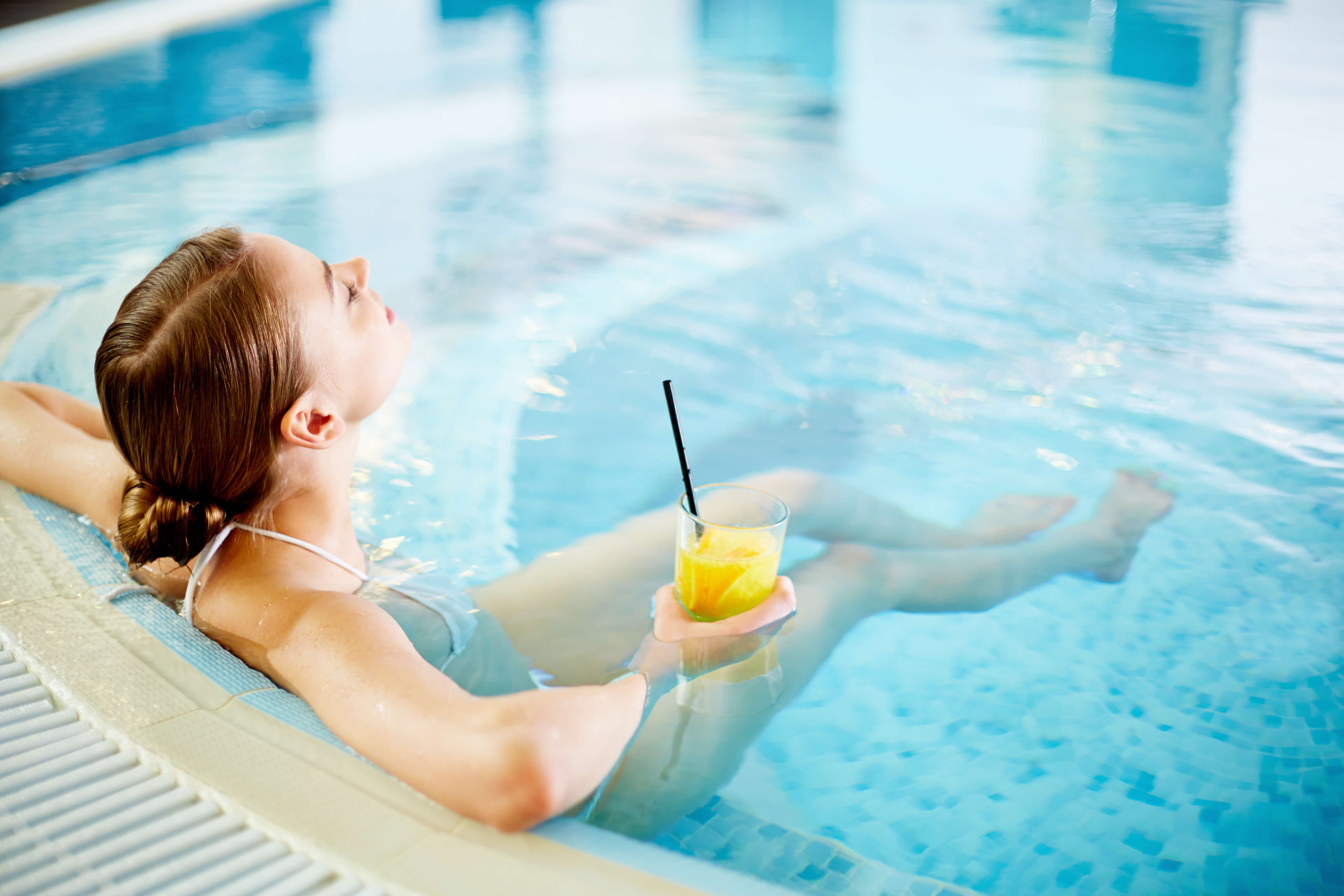
Tips to Conserve Energy with Custom Pool and Spa Designs
When designing a custom spa in your backyard, there’s a lot to consider. Making it as energy-efficient as possible is one major criterion that’s sometimes overlooked.
By having an eco-friendly backyard pool and spa you’ll not only be helping the environment, but you’ll be saving cash as well.
Here’s what to look for in energy-efficient spas, and tips to save on energy costs with custom pool and spa designs.
What Makes A Spa Energy-Efficient?
Energy-efficient spas reduce heat loss and operating costs.
The more heat a spa loses through its shell, plumbing, and cover, the more energy it will take to maintain a comfortable temperature.
Consider these spa design and installation tips that will reduce heat loss and energy consumption.
Sheltered Location
The location of the spa will determine how much heat it loses. A spa located near shelter, such as beside a house or in a gazebo, will retain more heat than if placed in the open with all sides exposed.
If you want your spa out in the open, consider installing a wind barrier to keep all sides of your spa covered. Or consider installing an in-ground spa.
An in-ground spa is a low-maintenance pool system that will keep all sides covered and well insulated in the ground.
Solid Foundation
Your spa needs a solid foundation that will retain more heat, such as a concrete slab or a sturdy deck. Grass and gravel have more spaces for heat to escape, so they won’t prevent heat loss compared to solid foundations.
Dense Bases
A solid, durable, and water-impervious base will prevent heat loss compared to bases that allow air flow.
Thick, high-quality, moulded composite bases retain more heat than slats of wood or thin layers of plastic.
Thick Insulation
Spas are usually insulated with full foam, partial foam, or advanced insulation materials, such as fibercor.
Some spas have convection insulation. This insulation reuses the heat that escapes from the spa motor to heat the water.
Partial insulation will allow for some heat loss. So to help you retain heat and save on energy costs, opt for a fully-insulated spa with thick, high-quality insulation.
Air-Tight Seals
Each functional component of a spa’s system, such as the jet, heating, filtration, circulation systems, is connected using hoses, pipes, tees, elbows, couplings, and other shell fittings.
If these parts aren’t well sealed, you will lose heat and energy while water and air pass through these systems. Water and air leaks can also cause other operational problems for your spa.
For an air-tight seal, the PVC pipes in spas need to be joined and sealed with an adhesive. And then a metal clamp is used to secure this seal.
Basic Plumbing
A simple plumbing design uses less energy compared to complex plumbing designs.
Plumbing with more valves, elbows, and union points slows down water flow and performance, requiring more energy to run. And more piping leads to greater heat loss since the water will have to travel through more pipes.
Fitted Covers
Fitted insulated covers will keep the heat in your spa for longer, especially during the winter months.
A cover fitted specifically for your spa will prevent air leaks and heat loss. There are also locking clips available that will keep the cover on in windy conditions.
Quality covers will have dense foam to prevent heat from passing through. Some covers even have heat-reflective material underneath to reflect the heat back into the water.
You can also use a floating thermal blanket in your spa when not in use. This will maximize heat retention for your spa water.
Dual-Pump Systems
Spa pumps using dual-pump circulation systems are more energy-efficient than single-pump systems.
Dual-pump systems use one pump to circulate water and another pump to run the jets. This design is more efficient. It prevents your spa from overworking a single pump so your pump will last longer.
LED Lights
LED light bulbs last longer and are more energy-efficient compared to incandescent and fluorescent light bulbs.
To conserve energy and reduce replacement costs over time, opt for a spa with LED lighting. Or, replace the lights in your spa if they are less efficient.
The Cost of Running A Hot Tub Or Spa
The cost to heat a spa each month will depend on:
- The electricity unit price per kilowatt hour;
- The temperature you use to heat your spa; and
- How often you use your spa.
The time of day that you run your spa will affect the price per kilowatt hour. Costs are higher during the weekdays in summer, and later in the day in winter. So make sure you are aware of the peak energy times for your energy provider.
While you may want to heat your spa all day, you will have higher energy costs if you do this. So, to keep costs at a minimum, set your spa thermostat timer to heat your pool during off-peak hours.
If you run your spa at a higher heat, especially in winter, it will cost more to run. But you can still maintain a comfortable spa temperature even if you lower the temperature by a few degrees.
Newer spa models tend to cost around $23 per month to run. But older models that are not energy-efficient can cost upwards of $50 per month to run.
Tips To Reduce Energy Consumption & Costs
Along with using energy-efficient components of a spa, make sure to maintain your spa regularly for optimal performance. This includes monitoring the chemicals in the water and cleaning and changing the filters on a regular basis.
You should also inspect your spa for leaks and repair these immediately. This includes replacing the wet insulation.
Leaks can reduce the effectiveness of your spa’s insulation by soaking the insulation with water. Leaks will also require you to fill up your spa and heat the water more often.
To save even more on energy consumption and costs, consider lowering the temperature of your spa by a few degrees.
Some spas come with eco mode settings that lower the temperature when your spa isn’t in use, allowing you to save energy and reduce heating costs. Also, make sure to turn off the air controls when your spa is not in use to save even more energy.
An energy-efficient custom spa will have both financial and environmental benefits.
You can reduce your energy consumption, saving you money on your monthly energy bills. And you can help reduce your environmental footprint by placing less of a demand on the power grid.
Contact the in-ground pool and spa experts to find an energy-efficient spa that you can enjoy, without the added long-term costs to your wallet and the environment.

Bert Minor has been a part of the landscaping business for nearly twenty years and has gained an excellent reputation as an innovative and creative designer. In fact, several of his designs and projects have been featured in industry supplier magazines. An active and contributing member of the industry, Bert sat on various boards including the Ottawa Chapter of Landscape Ontario and the Landscape Ontario Provincial Construction Committee. Bert also contributed technical articles published in the Canadian National Landscape Association magazine. With a relentless pursuit of knowledge, Bert has attained several industry certificates in landscape design, landscape construction and with the PHTCC—Pool and Hot Tub Council Canada. Prior to joining the landscaping industry, Bert spent several years in management in the services sector primarily in a customer advocate role. His honesty and integrity and his ability to build and develop strong relationships with clients reflects that.
